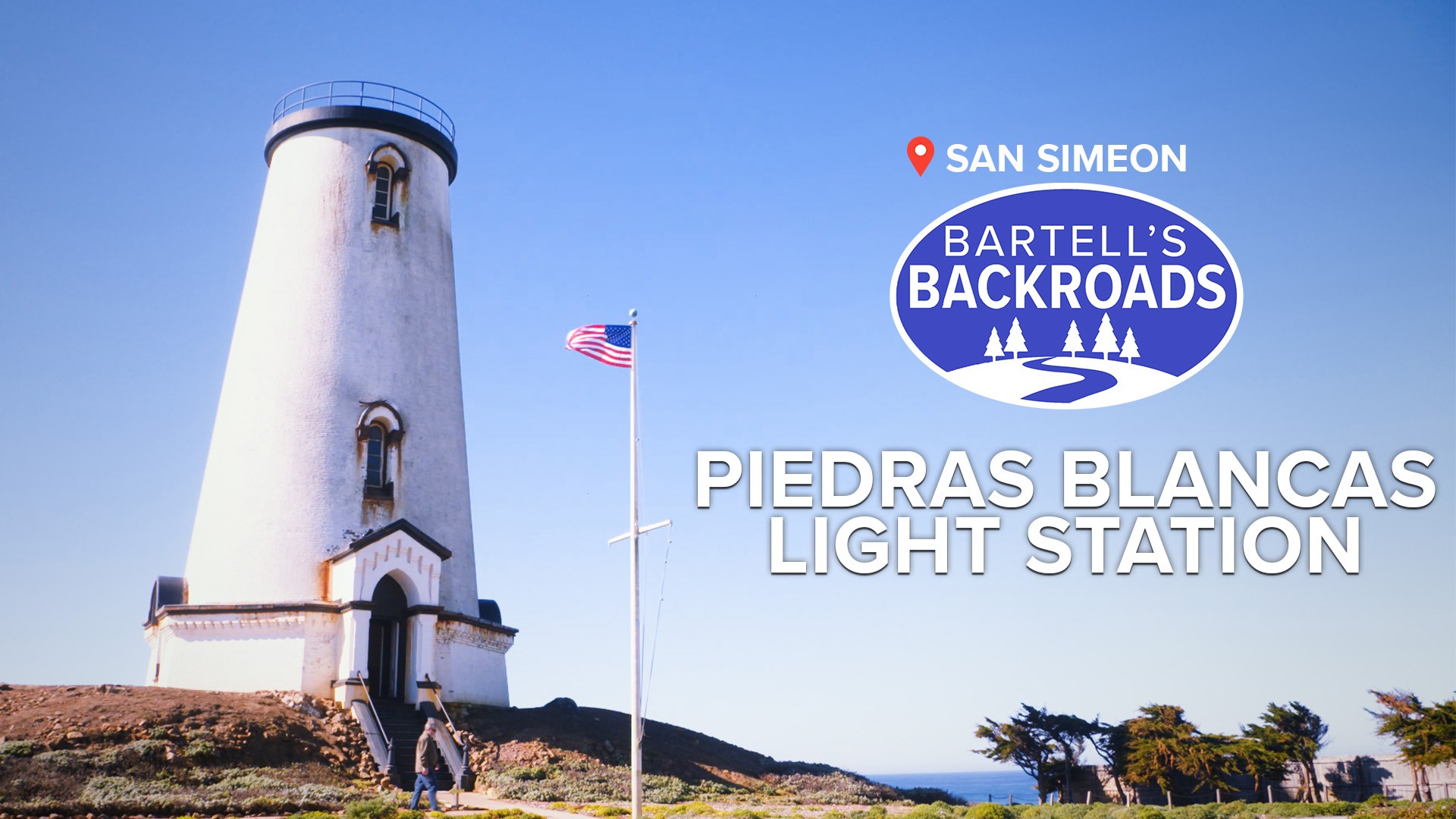SAN SIMEON, Calif. — California’s Central Coast is a beautiful and dangerous place. Rough water and jagged rocks are a nightmare for ships navigating this stretch of ocean.
Thankfully, the Piedras Blancas Light Station is here to warn boat captains of the impending dangers.
First illuminated in 1875, the Piedras Blancas lighthouse was built following a series of shipwrecks during the California Gold Rush. Light Station Manager Ryan Cooper says the location of this lighthouse was key.
Not only was it built on the western-most point in this stretch of coast, but it was also built next to a giant white rock. Spanish explorers used it as a landmark in the 1700s and called it Piedras Blancas.
“The white on the rock is bird guano,” said Cooper.
Bird guano, also known as bird poop, comes from the nesting sea birds who painted the rock its iconic color.
"The smell coming off the rock is not very pleasant,” said Cooper.
Early lighthouse keepers had a lot of smells to deal with. Before electricity, the light was powered by animal renderings.
“In the middle of the light was a large candle and here we used animal lard oil,” said Cooper.
TAKE A TRIP ON BARTELL'S BACKROADS:
► See an interactive map of everywhere John has visited on the backroads
► Watch all of the Backroads videos
► Follow John on Facebook
You won’t see the giant lard light today. An earthquake in 1948 caused the lighthouse to crack and lean. The historic fresnel lens light was removed and placed on the ground in the neighboring town of Cambria.
“Yes, the pig fat lard-powered lens went all the way down to this tiny light which looks like a bulb you would put in your car headlight," said Cooper.
The Bureau of Land Management now manages the Piedras Blancas Lighthouse and after years of renovation and habitat rehabilitation, visitors can enjoy historic tours of the light station or walk any one of the nature trails that give you a good view of the resident Elephant seals.
Tours of Piedras Blancas Lighthouse happen weekly by reservation only. You can reserve your tour HERE.
More unique spots from the Backroads: From landfill to art park: the Albany Bulb



















